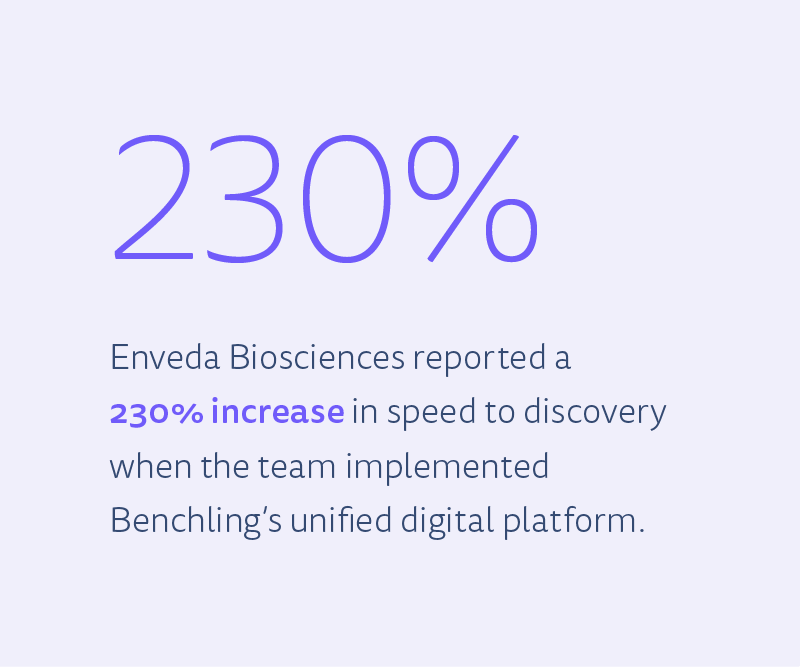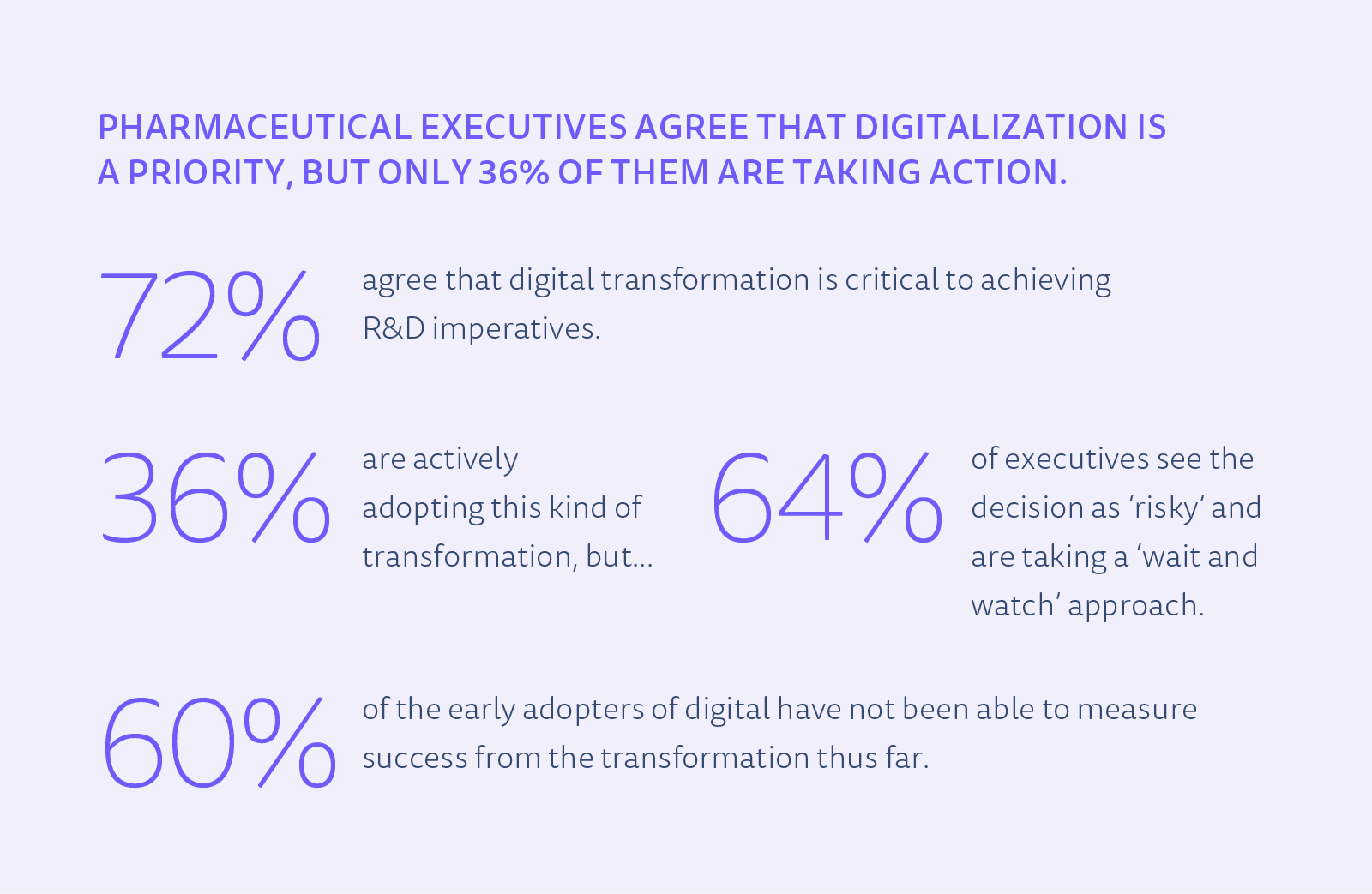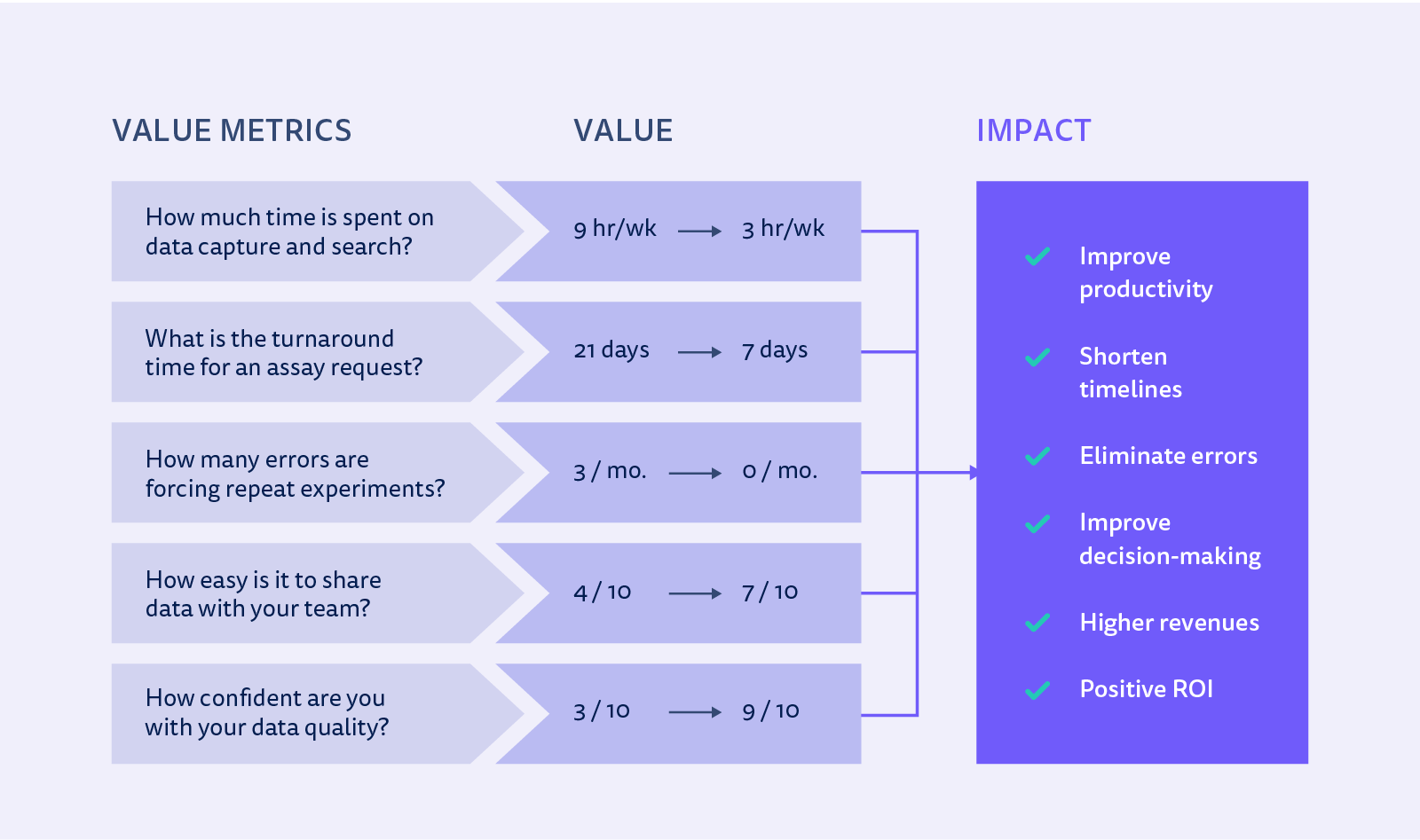What is Digitalization, and How to Measure its Value in Biopharma R&D
The biopharmaceutical industry is moving faster than ever before. Recently, we’ve seen biopharma organizations like Pfizer / BioNTech and Moderna create, test, and bring to market a new class of mRNA-based vaccines for COVID-19 in under a year. As speed and efficiency become more vital in such a competitive market, innovative, forward-thinking companies are realizing that comprehensive digitalization of their R&D processes will not only be helpful, but crucial to winning the race for the next cure.
What is digitalization?
In today’s fast-paced, tech-forward marketplace, it's easy to confuse digitization with digitalization.
Digitization is simply the translation of analog data into a digital format. An example of digitization is scanning a sheet from a paper lab notebook to create a PDF. In this scenario, the scientist creates a digital record of something inherently analog, but their business process is still analog-first, digital-second.
Digitalization refers to a paradigm shift. It transforms processes so that they are fundamentally digital-first. Instead of recording notes on paper and scanning them in, scientists don’t use paper at all. Their workflows are centralized on unified, digital systems for record keeping, experiment tracking, and data analysis. Digitalization of key R&D processes is the first step to achieving digital transformation for the entire organization.
Digital Transformation = Speed to Innovation
In today’s world, the phrase “digital transformation” is certainly a buzzword — and legacy vendors have given this jargon a bad reputation by overpromising and under-delivering on its ability to accelerate research and business success. However, accomplishing a digital transformation is mission-critical for successfully innovating in the biopharma industry.
When it’s successful, moving people, teams, and entire organizations off of disparate legacy data management systems and onto a single, modern, cloud-based infrastructure can meaningfully improve R&D across the board. For hundreds of companies, such a transformation increases productivity, improves collaboration, enhances data integrity, and bolsters scientific and operational decision-making.

Still, given the investment required to implement a digital transformation, some organizations are not convinced of how, exactly, these solutions can help them improve decision-making, shorten development timelines, and ultimately win the R&D race.
Executives must be able to measure the value of their organization’s digital transformation
A robust, digital informatics solution can have demonstrable impact, both in the short and the long-term, if it is measured. With Benchling, decision-makers can quantify the improvements that digital transformation brings to their organization. In fact, we know that, overall, scientists on Benchling have reduced the total time they spend on lower-value data management tasks by ~60% when compared to their original systems. This reduction gives them back an average of ~10 hours a week to spend on higher-value activities like experimental design and analysis.
In other words, Benchling saves the average scientist about 10 hours per week.
Most biopharma executives believe that modernizing data management is vital. According to a recent Accenture survey of approximately 250 pharmaceutical executives, 72% agree that digitalization is critical to reaching R&D milestones. Yet only 36% are actively adopting this kind of transformation. This is in part because some early adopters have struggled to measure the business impact of their investment. So we’ve developed a proven, repeatable framework to help companies assess their digital maturity and develop quantifiable metrics to calculate the business value of this transformation. Let’s take a closer look at a few core concepts from this model.

Champions of digital transformation need to be able to build a comprehensive business case
The good news is, building a case for the business value of a digital transformation is not as
complex as it might sound. We recommend these three steps:
1. Assess your digital maturity
First, investigate your current practices when it comes to data management and lab processes so that you can build a deeper understanding of any barriers you face. Ask questions based on your current practices, such as:
Are our end users primarily capturing results by hand? Are they manually linking entities? Or do the systems do this automatically?
Do our scientists need to juggle software systems to find the data they need?
You can also use this analysis to unlock relevant data, develop procedural standards, and ultimately inform your digital transformation strategy.
2. Define value metrics
Based on the bottlenecks you uncover during the maturity assessment, define quantifiable value metrics that you would aim to improve on with a digital solution. These could include metrics such as the total time spent searching for data or the turnaround time for a common assay request.

3. Measure business value
Finally, measure the business value by quantifying the impact of the digital solution, for example by looking at demonstrable gains in areas such as efficiency and productivity. The most effective way to do this is to survey your scientists and end-users, both before and after implementation of the digital solution. That way, you can obtain concrete data on the value metrics outlined in Step 2 above. For example, the turnaround time for an assay request may have been 3 weeks originally, but with a unified digital informatics platform, it could be reduced to just one week. These sorts of measurable values can help you prepare a value report or calculate a return on investment.
If you are still early in your journey toward digital transformation, you can approach this step by quantifying where your organization is right now and extrapolating the future impact of the digital solution. Having helped hundreds of companies get more out of their data, Benchling can help you unlock these answers. We track business value for our customers both before and after their transformation. This way, we can benchmark the expected impact for a company that is considering moving over to our platform.

Real-world business impact must be within reach
The ideal data management solution for biopharmaceutical R&D is a unified, cloud-based informatics platform that supports many unique scientific and operational use cases. Hundreds of companies are already seeing the business value this type of solution can bring by using Benchling, including Regeneron, Gilead, Sanofi, Sana Biotechnology, and Editas Medicine.
Here is one real-world example: A global biopharmaceutical leader developing antibody and cell therapies for cancer struggled with a range of data maturity issues, including data silos and manual processes, that impacted productivity, study planning, and resource forecasting. After implementing the Benchling Life Sciences R&D Cloud, in less than a year, the company saw the following results:

Learn more about how your company can effectively measure the business value of a digital informatics platform in our full perspective paper.
Interested in speaking with our Business Value team to assess the value Benchling could add to your company? Contact us here.
Powering breakthroughs for over 1,200 biotechnology companies, from startups to Fortune 500s
